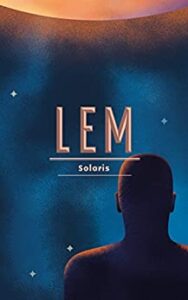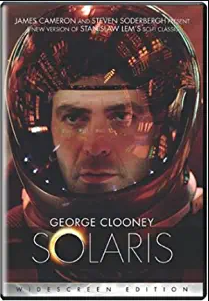A Science Fiction Classic
I recently read the 2014 Kindle edition of Solaris by Stanislaw Lem. I’m not sure why I don’t recall ever hearing of this book before my recent introduction to it. It’s considered a science fiction classic. I found a mention of it a few weeks ago, in an older book by John Gardner, and that mention intrigued me, so I decided to give it a try. I’m glad I did.
A Living, Conscious Sea

Solaris is a novel about a planet named Solaris, and the most recent of several generations of Earth scientists, or Solaricists, who still find the planet a mystery. Because of the planet’s awkward orbit of two suns, no life has been able to evolve on Solaris, except for one entity, which is its vast, living ocean of gel-like substance. The ocean is almost constantly expressing some new form or other in its waves, or movements, some of the formations being quite spectacular, and sometimes dangerous for scientists to explore. The planet’s binary star system consists of one red star and one blue star, and some of the most vivid descriptions are of the effects on the characters of the rising and setting of those two suns.
The planet is uninhabitable except in a sealed station that orbits it, or in special suits with breathing apparatus, due to toxins in the atmosphere, so no one really ever touches it, and the ocean itself moves away from any approaching tool or vehicle, as if deliberately avoiding physical contact. And yet there is contact, and that’s what this story is about. It seems there may have been contact all along.
G-Formations or Ghosts?
The story begins when the latest scientist arrives on Solaris. His name is Kris Kelvin, and he learns as soon as he arrives that another scientist, named Gibarian, who is his former mentor, has just died. Later, Dr. Kelvin, who is trained as a psychologist, begins seeing people who shouldn’t be there, eventually including his former and now dead lover, Harey, who was a very young woman, a girl really, when he knew her. In fact all the scientists studying Solaris recently have been confronted by “ghosts” from their past, or what one of them calls “G-formations”. These seem to be replicas of people from their pasts, usually people they’ve hurt in some way.
It’s a strange and haunting story, sometimes reminiscent of 2001 A Space Odyssey, and the tone of this story closely aligns with Arthur C. Clarke’s fiction. But it’s also unique in itself. There are touches of psychology, philosophy, and of hard science in the sometimes long, academic-feeling, dry descriptions of the planet, the ocean, and all the studies and scientists that have preceded the current ones.
Dreadful Yet Compelling
I went through a gradual evolution toward liking and then loving this story. At first it repelled me, feeling a bit too much like horror, which is my least favorite fiction genre. But I kept going, and got so I looked forward to finding out what happened next, even if I dreaded what that might be. I like the main character, Dr. Kelvin, so I wanted to know what would become of him. By the time I got to the end, I was so intrigued by the story that I wanted a sequel and even checked to see if there was one. There isn’t.
I found Solaris compelling as far as language, even when the story felt intimidating, or when it seemed to throw too much information at me at once. Despite its sometimes dry, detached tone, it’s beautifully written and I think that even that more detached tone of the writing at times fits very well with a scientific station orbiting over an ocean that retreats from any attempt to touch it. The story is in some ways a work of art, and with its unique premise it’s no surprise to me that it’s considered a science fiction classic.
Publishing History and Films

Solaris was originally published in 1961. Earlier English editions of Solaris, including the 2002 paperback, were translated from Polish into French and then from French into English. As far as I can tell, only the Kindle ebook edition I read is translated directly from Polish into English. That translation was done by Bill Johnston.
There have been two films adapted from Solaris, a Russian one in 1972, and a more recent American film with George Clooney in 2002. I have not seen either movie, in fact I wasn’t aware of either one’s existence until I looked up the novel on Wikipedia in the midst of reading it.
Other Reviews
Since reading it I found some other reviews of Solaris (Note that these may be reviews of the older translation, and I only have experience with the most recent one):
Public Books: B-SIDES: STANISLAW LEM’S “SOLARIS”
Solaris: An alien sentient ocean